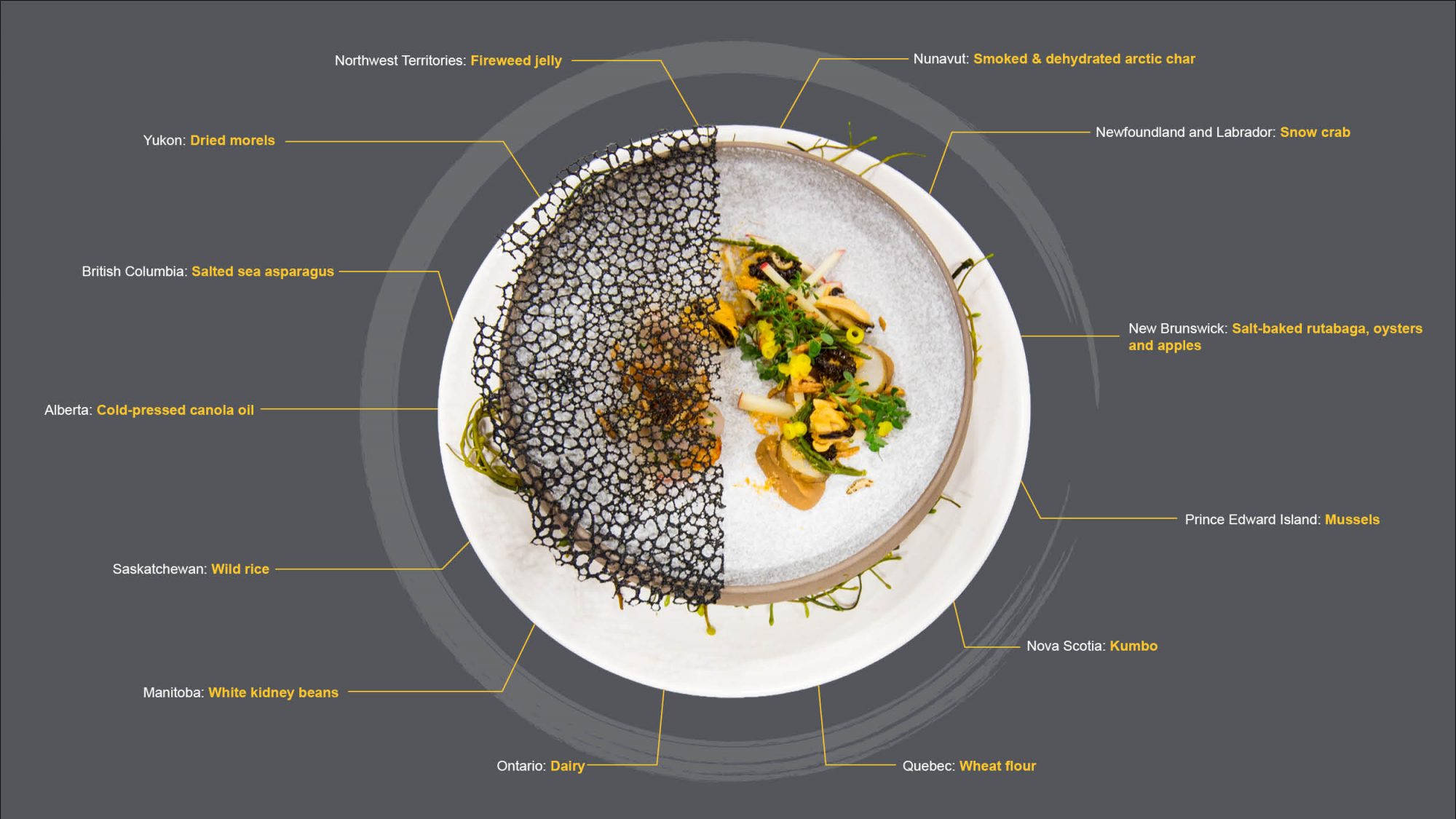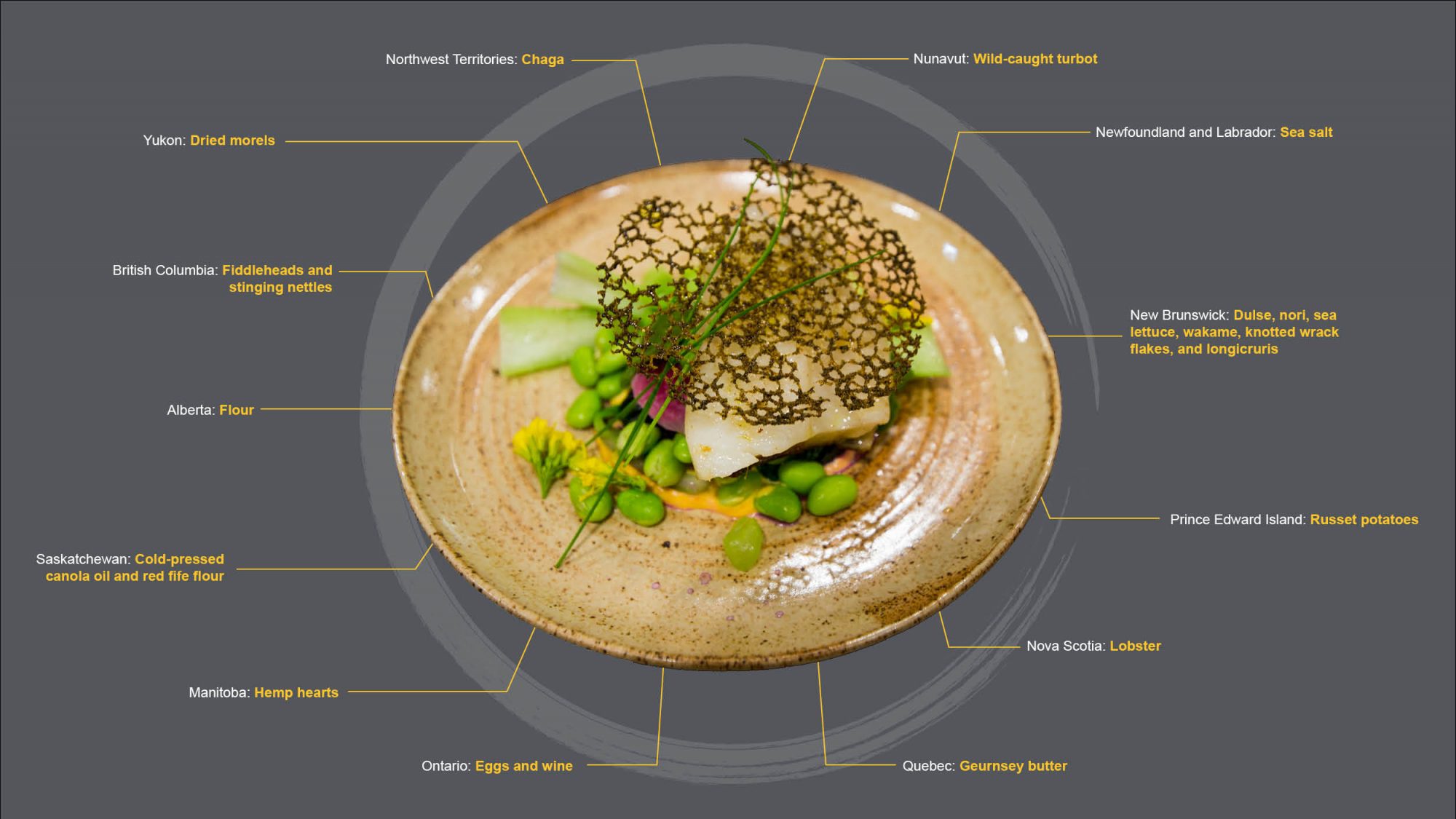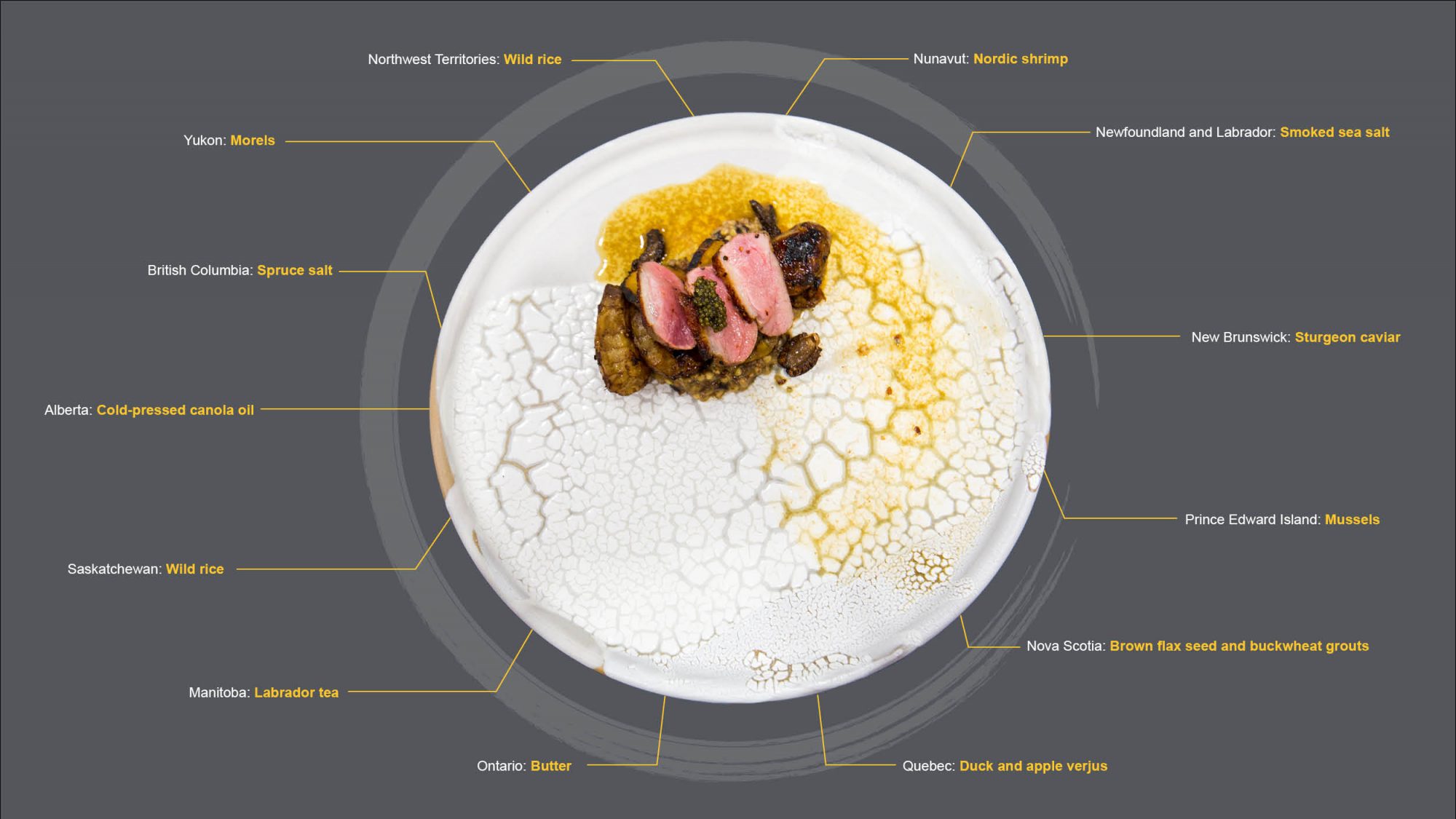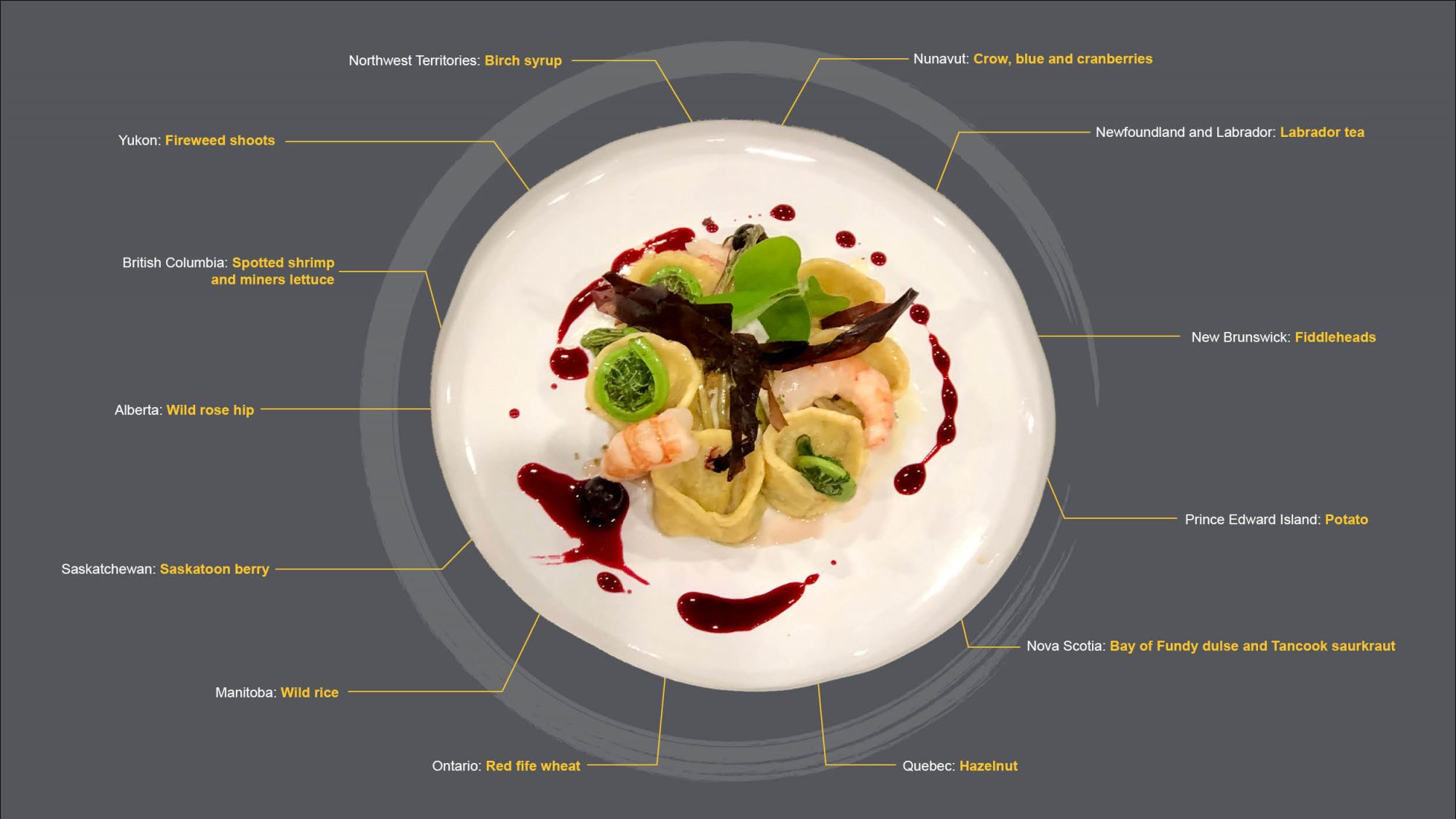If Canada were represented on just one plate, what would it include?
Yukon: dried morel mushrooms; Northwest Territory: fireweed jelly; Nunavut: smoked and dehydrated Arctic char; Quebec: Wheat flour; Alberta: Cold-pressed canola oil; British Columbia: Salted sea asparagus; Saskatchewan: Wild rice; Manitoba: White kidney beans; Ontario: York; New Brunswick: Salt baked rutabaga, oysters apples. Prince Edward Island: mussels; Nova Scotia: Kumbo; Newfoundland and Labrador: Snow crab.
Culture
The Canadian Plate Challenge
This culinary competition asked four chefs from across the country to create a dish they feel truly tastes like Canada, while also being sustainable, healthful, and just.
That old guard, poutine, with squeaky cheese curds and crisp fries made from Prince Edward Island potatoes? Would it be fish from one of our three coasts and numerous lakes, or Angus steaks from Albertan ranches? What about the fruits of Niagara, the Okanagan, or Annapolis? Perhaps a bounty of venison and morels hunted and gathered near Wiikwemkoong? Would it include maple syrup collected by Mennonite farmers, or spices and flavours brought from far away by our newer citizens? Would it include greens from a vertical farm or lentils from the Prairies harvested by a combine?
In the midst of thinking about how these ingredients contribute to Canadian cuisine, we find ourselves in need of nourishment that not only satisfies the taste buds but is kind to our bodies and our environment. Guides, reports, and commissions dominate the headlines with instructions for what’s healthy for the planet and for people. How do we reconcile these many requirements on our Canadian plates?
On April 30th, 2019 we challenged four chefs to create the Canadian Plate at SIAL Canada.
The Rules
· One ingredient sourced from each of Canada’s ten provinces and three territories (13 ingredients minimum)
· Be created in the context of feeding a healthy planet and healthy people
· Respect the perspectives of indigenous peoples and new immigrants to Canada
· Recognize that 90% of Canadian food is produced through family farms
· Recipe must be prepared, with 6 full-size sample plates, on stage within 60 minutes.
· Each chef must be prepared to present dish and concept to judges upon completion of stage cooking
The Results
Winner: Chef Pierre Richard

Yukon: dried morel mushrooms; Northwest Territory: fireweed jelly; Nunavut: smoked and dehydrated Arctic char; Quebec: Wheat flour; Alberta: Cold-pressed canola oil; British Columbia: Salted sea asparagus; Saskatchewan: Wild rice; Manitoba: White kidney beans; Ontario: York; New Brunswick: Salt baked rutabaga, oysters apples. Prince Edward Island: mussels; Nova Scotia: Kumbo; Newfoundland and Labrador: Snow crab.
Chef Laura Maxwell

Yukon: Dried Morel Mushrooms ; Northwest Territories: Chaga; Nunavut: Wild-caught turbot; Prince Edward Island: Russet potatoes; New Brunswick: Seven Sea Veggies-a blend of dulse, nori, sea lettuce, wakame, knotted wrack flakes, and longicruris; Nova Scotia: Lobster; Manitoba: Hulled hemp hearts; Saskatchewan: Cold-pressed canola oil, red fife flour; Newfoundland: Sea salt; Alberta: All-purpose unbleached flour; Quebec: Chagnon 84% butter from grass-fed Guernsey cattle; British Columbia: Fiddle heads and stinging nettles; Ontario: Eggs, verjus, sunchokes, wine, garlic, shallot, herbs.
Chef Josh Crowe

Newfoundland and Labrador: Smoked sea salt; PEI: mussels; Nova Scotia brown flax seed and buckwheat grouts; New Brunswick: sturgeon çaviar; Quebec: duck and apple verjus; Ontario: Butter; Manitoba: labrador tea; Saskatchewan: wild rice; Alberta: Cold-pressed canola oil; British Columbia: spruce salt; Yukon: morels; Northwest Territories: foraged birch syrup; Nunavut: Nordic shrimp.
Chef Andrea Carlson

British Columbia: Spotted Shrimp and miners lettuce; Alberta: Wild rose hip; Saskatchewan: Saskatoon berry; Manitoba: Wild rice; Ontario: Red fife wheat; Quebec: Hazelnut; Nova Scotia: Bay of Fundy dulse and Tancook sauerkraut; New Brunswick: Fiddleheads; Newfoundland and Labrador: Labrador Tea; P.E.I.: Potato; Yukon: Fireweed shoots; Nunavut: Crow, blue and cranberries; Northwest Territories: Birch syrup.
